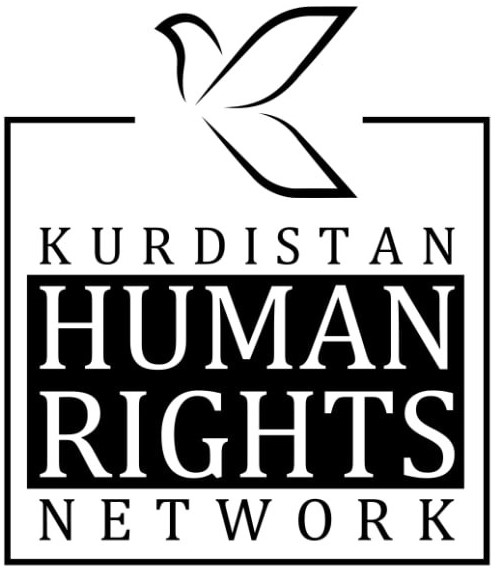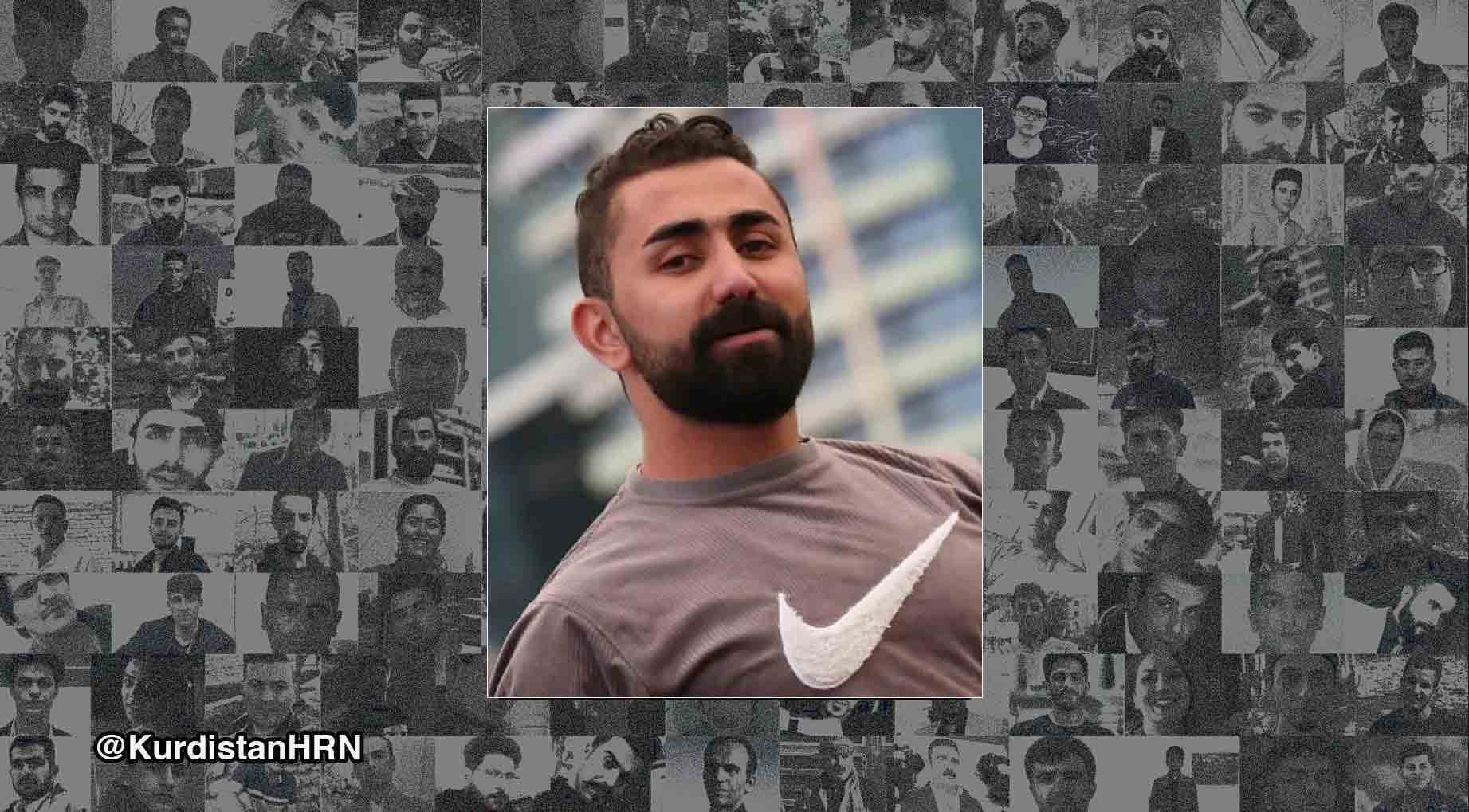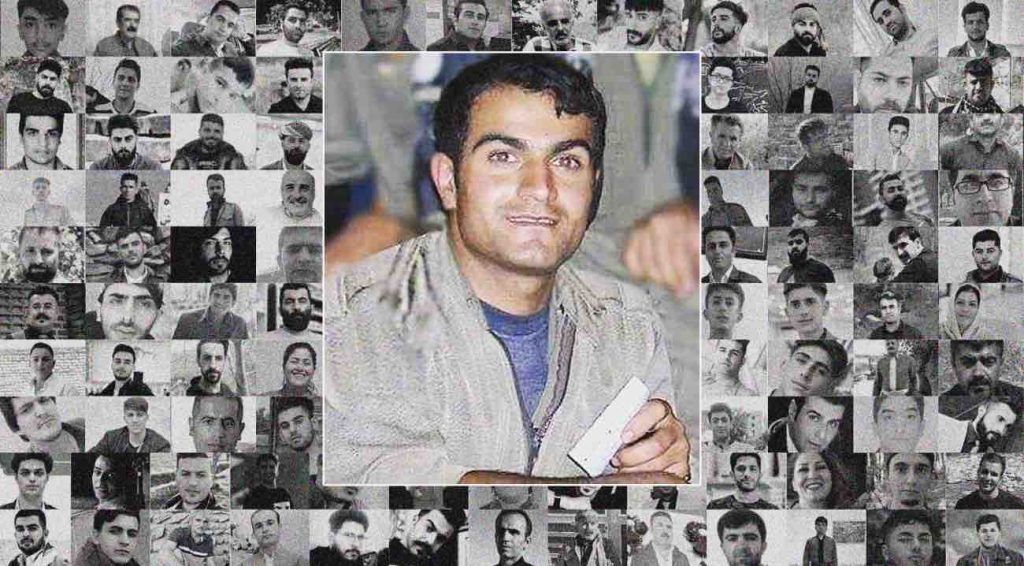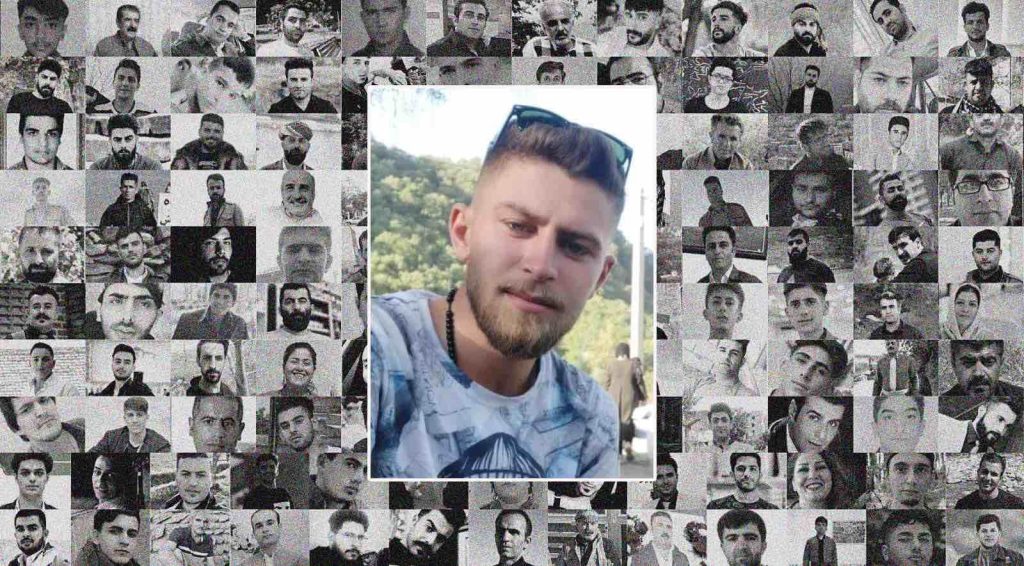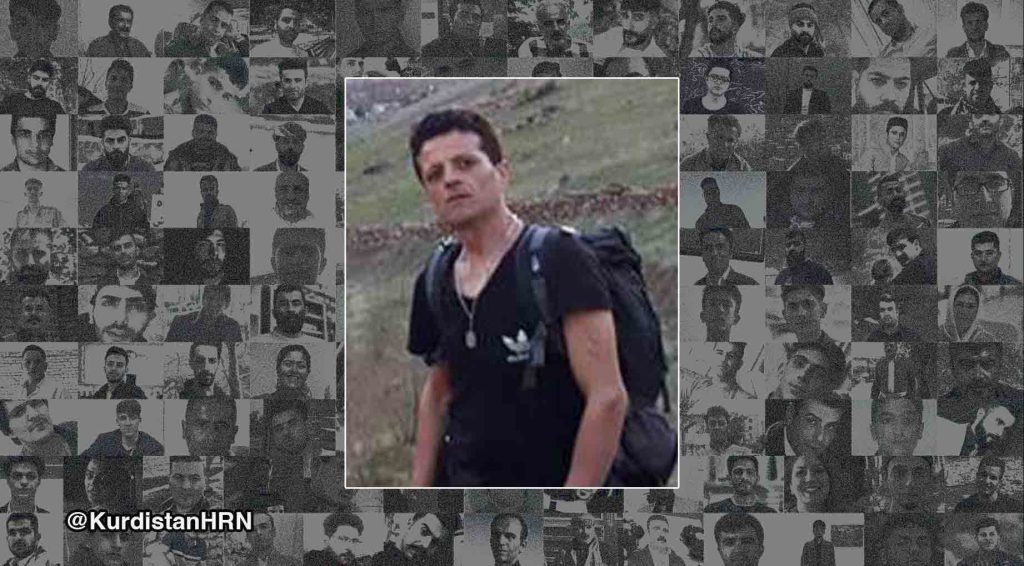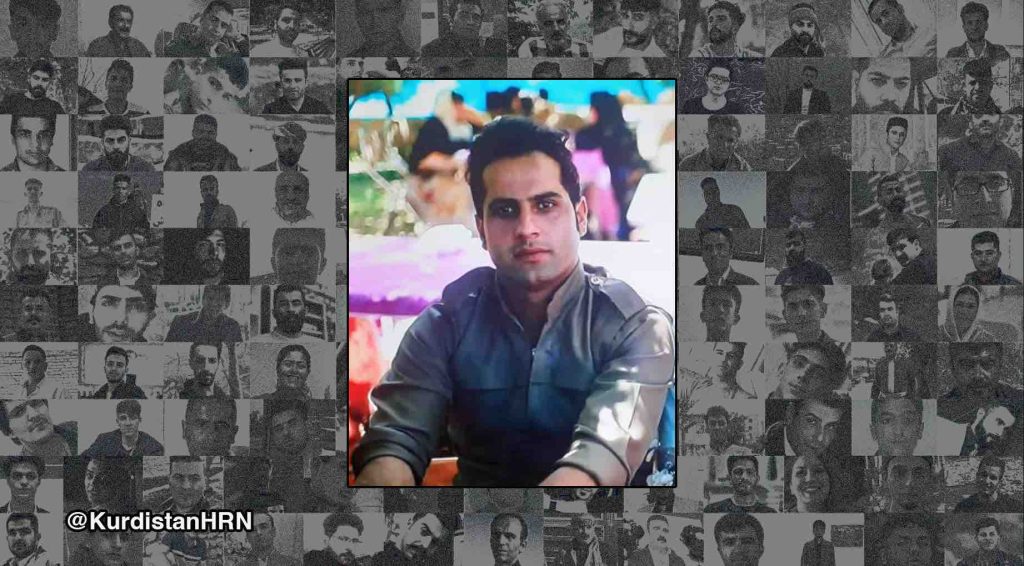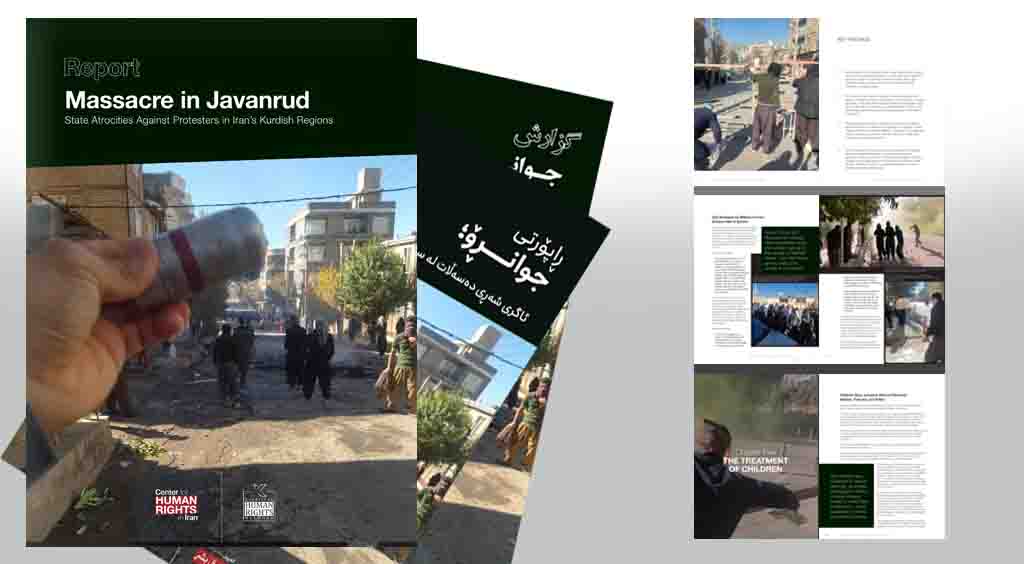Joint explanation of the Kurdistan Human Rights Network (Network) and the “Abdorrahman Boroumand Center for Human Rights in Iran (ABC): This case is a part of the collaborative documentation of the Kurdistan Human Rights Network and the Abdorrahman Boroumand Center. The Kurdistan Human Rights Network intends to gradually document cases of extrajudicial executions of Kurdish citizens and activists. For this purpose, the network has used the experiences and research methodology of the Abdorrahman Boroumand Center, which has been active in the field of documenting human rights violations in Iran for many years. The report of this case and subsequent reports will be published in the “documentation” section of the Kurdistan Human Rights Network website and the “Omid Memorial” of the Abdorrahman Boroumand Center. Some of the original and follow-up interviews used in this documentation were conducted by the Center, some by the Network, and some in collaboration.
Information regarding the case of Mr. Shahryar Mohammadi, son of Ali and Mina, was obtained from interviews with two close family members (February 06, 2022 and June 22, 2023) and several interviews with informed sources; (from March to August 2023). To complete the information about this case, news was obtained from the websites of Voice of America’s Persian division (February 6, 2023), Kurdpa (April 23, 2023), Kurdistan Media (December 28, 2022), BBC Persian’s YouTube channel (April 15, 2023), BBC Persian’s website (May 16, 2023) Hana Human Rights Organization (April 1, 2023), Iran Wire (April 25, 2023), Bultan News (April 26, 2023) and Tasnim News Agency (November 19, 2022).
Mr. Shahryar Mohammadi was born on April 25, 1994, into a Sunni Kurdish family in the city of Bukan in West Azerbaijan province. He spent his childhood, adolescence and youth in this city. After finishing high school, Mr. Mohammadi entered Bukan Azad University and studied architecture. According to his relatives, he studied until the second semester of university, but then dropped out due to the family’s financial problems. Mr. Mohammadi was a “kasebkar” (tradesman)* transporting goods with his private car (interview with a family member, February 6, 2023).Mr. Mohammadi was interested in political activities and the Komala party. According to one of his relatives, in 2014, after Mr. Mohammadi’s car, which was his work vehicle, was seized by the government, he along with his friend Mohammad Hassanzadeh (who was killed during the 2022 protests) went to Iraqi Kurdistan to join the Komala party. After about five months, following threats from the security forces and their putting pressure on his family, Mr. Mohammadi abandoned his party activities and returned to Iran (interview with a family member, February 6, 2023).
After returning to Iran, Mr. Mohammadi was repeatedly summoned and interrogated by security institutions such as the Information Ministry and the IRGC Information Organization (interview with a family member, February 6, 2023).One year after Mr. Mohammadi’s return to Iran, following a report from unknown persons, security officers went to his family’s home and took away his phone and computer RAM. They found pictures on Mr. Mohammadi’s computer from the time when he was a (Komala) party member, showing him in Kurdish clothes and armed. This led to his arrest and the beginning of another round of interrogations. He was detained for about two months until the family managed to find his original interrogator to testify that Mr. Mohammadi’s return to Iran was voluntary; he was then finally released on bail (interview with a family member, February 6, 2023).Relatives of Mr. Mohammadi describe him as a “very calm, kind, supportive” and “athletic, hard-working and caring youth.” According to one of his close relatives, Mr. Mohammadi “was an athlete, he practiced martial arts and received an award in this field. [He] believed in freedom and equality between men and women from a young age, and was a staunch opponent of compulsory hijab. [He] used to exercise and told his friends he would open a gym if the regime changed. He wanted to open a mobile phone shop. He always said that he would build a complex and let the needy live in it. He was full of unfulfilled dreams” (BBC Persian YouTube channel, April 15, 2023). According to another relative, Mr. Mohammadi’s “poverty and political beliefs did not allow Shahryar to have a comfortable life” (interview with an informed source, June 22, 2023). A person close to Mr. Mohammadi’s family said that he “had many dreams. One day, he got a tattoo that read ‘I dream of dying without dreams’” Mr. Mohammadi used to work as a realtor before his death. (BBC Persian YouTube Channel, April 15, 2023).He was also known to people as a “noble, conscientious, and knowledgeable” person. Mr. Mohammadi cared about people’s problems and helped solve them. A person who was close to Mr. Mohammadi during the 2022 protests considered him “one of the top leaders in Bukan” and said that after his murder, his friends no longer participated in the protests as they had done previously (Voice of America website, April 6, 2023; interview with a family member, February 6, 2023).During these protests, on November 15, 2022, a close friend of Mr. Mohammadi’s named Mohammad Hassanzadeh, who was injured in the eye area, was killed. After Mr. Hassanzadeh’s murder, Mr. Mohammadi was involved in events that resulted in increased security force attention the details of his life. According to relatives, on the night of November 15, Mr. Mohammadi, who was worried that his friend’s body would be confiscated by the security forces, went to the Qolipur Bukan hospital and secretly removed Mr. Hassanzadeh’s lifeless body and transferred it to his native village for burial. On the same night, pictures were published on social media showing Mr. Mohammadi sitting next to Mr. Hassanzadeh’s body in a mosque building. In these pictures, Mr. Mohammadi’s hands are bandaged. His relatives say that the reason for this was the injuries sustained from a fight with one of the security officers before the transfer of Mr. Hassanzadeh’s body (interview with a family member, February 6, 2023).Mr. Mohammadi also took several wounded people, who had been “directly shot” by government forces, to “underground doctors” on the evening of November 17 (Voice of America website, April 6, 2023).
2022 (Jina Mahsa Amini) Protest background
Nationwide protests were sparked by the death in custody of Ms. Jina Mahsa Amini, a 22-year old Kurdish woman, on September 16, 2022. Amini had been arrested by the morality police in Tehran for improper veiling on September 13 and sent brain dead to the hospital. The protests, which started in front of the hospital and continued in Saqqez County (Kurdistan Province) where Mahsa was buried, were triggered by popular exasperation over the morality patrols, misleading statements of the authorities regarding the cause of Mahsa’s killing and the resulting impunity for the violence used against detainees, as well as the mandatory veil in general. This protest, initially led by young girls and women who burned their veils and youth in general who chanted the slogan “Women, Life, Freedom,” rapidly took on a clear anti-regime tone, with protesters calling for an end to the Islamic Republic. The scope and duration of the protest was unprecedented. State efforts to withdraw the morality police from the streets and preventative arrests of journalists and political and civil society activists did not stop the protests. By the end of December 2022, protests had taken place in about 164 cities and towns, including localities that had never witnessed protests. Close to 150 universities, high schools, businesses, and groups including oil workers, merchants of the Tehran bazaar (among others), teachers, lawyers (at least 49 of whom had been arrested as of February 1st, 2023), artists, athletes, and even doctors joined these protests in various forms. Despite the violent crackdown and mass arrests, intense protests continued for weeks, at least through November 2022, with reports of sporadic activity continuing through the beginning of 2023.
The State’s crackdown was swift and accompanied by intermittent landline and cellular internet network shutdowns, as well as threats against and arrests of victims’ family members, factors which posed a serious challenge to monitoring protests and documenting casualties. The security forces used illegal, excessive, and lethal force with handguns, shotguns, and military assault rifles against protesters. They often targeted protesters’ heads and chests, shot them at close range, and in the back. Security forces have targeted faces with pellets, causing hundreds of protesters to lose their eyesight, and according to some reports women’s genitalia. The bloodiest crackdown took place on September 30th in Zahedan, Baluchestan Province, where a protest began at the end of the Friday sermon. The death toll is reported to be above 90 for that day. Many injured protesters, fearing arrest, did not go to hospitals where security forces have reportedly arrested injured protesters before and after they were treated.
According to reports from a human rights organization, at least 450 protesters were killed by fire from security forces during the protests, while thousands were wounded or arrested. In the twelve months after protests commenced, at least seven individuals were tried and executed in connection with the protests, without minimal standards of due process. Several others are faced with charges which could potentially result in capital punishment.
According to reliable published reports, a number of the families of killed protesters have been pressured by security bodies to record their slain loved ones as state forces, or to blame protesters for their deaths. In regions such as Kurdistan, security bodies have summoned some families to compel them to declare dissident Kurdish political parties responsible. Moreover, state media has reported that approximately 70 members of the security forces were killed in the protests.
Protesters, human rights groups, and the media have reported cases of beatings, torture (including to coerce confessions), and sexual assaults. Detainees have no access to lawyers during interrogations and their confessions are used in courts as evidence.
Public support and international solidarity with protesters have also been unprecedented (the use of the hashtag #MahsaAmini in Farsi and English broke world records) and on November 24, 2022, the UN Human Rights Council adopted a resolution calling for the creation of a fact finding mission to “Thoroughly and independently investigate alleged human rights violations in the Islamic Republic of Iran related to the protests that began on 16 September 2022, especially with respect to women and children.”
2022 Bukan Protest background
Following the government’s killing of Jina Mahsa Amini on 16 September 2022, widespread protests erupted across Iran. The spark of these protests first ignited in Saqqez, Zhina’s hometown, during her funeral ceremony and later spread to other cities in Kurdistan and Iran. Bukan was one of the cities that became a focal point in solidarity with the people of Saqqez. In the course of several months of Women Life Freedom protests, the different streets and neighbourhoods of the city became the scene of continuous discontent and anti-government strikes. Of the 123 cases of Kurdish civilians killed by security forces during the Women Life Freedom protests, 17 took place in Bukan.
Komala
Several remaining members of the Kurdistan Democratic Party of Iran established the Revolutionary Organization of this party in Iraq in the mid 1960s. Esma’il Sharifzadeh, Abdollah Mo’ini, and Molaavareh were among the leaders of this organization who, inspired by the Cuban Revolution, began an armed guerrilla struggle in Kurdistan. When this group was defeated in 1969 and several of its members were arrested, armed struggle was criticized and the Maoist trend overcomes. When some of its leaders were released in 1978, the Revolutionary Organization of Working People in Kurdistan – Komala was established. Based on Marxist theory, Komala was against the capitalists and landlords and encouraged workers and peasants in Kurdistan to an armed uprising against them and the central government. This organization considered the Kurdish Democratic Party of Iran (PDKI) as the rich party and campaigned against it, resulting in several armed conflicts and hundreds dead. In 1982, Komala joined another Marxist group, Sahand, which was basically a theoretical group, and established the Communist Party of Iran. Then it became called the Kurdistan Organization of the Communist Party of Iran – Komala. Years later, this organization separated from the Communist Party of Iran and faced several schisms. The Komala Party of Iranian Kurdistan, led by Abdollah Mohtadi, Komala, and the Kurdistan Organization of the Communist Party of Iran led by Ebrahim Alizadeh are some of these factions. (BBC Persian’s website, May 16, 2023)
Mr. Shahryar Mohammadi’s threats and death
Mr. Shahryar Mohammadi was killed on the evening of Friday, November 18, 2022, during the protests, by shooting of Islamic Revolutionary Guard Corps forces.
According to one of Mr. Mohammadi’s close relatives, it seems that he was identified and aroused security institution ire after the funeral ceremony of his friend, Mohammad Hassanzadeh, in Bukan (interview with a family member, February 6, 2023).
Mr. Mohammadi was chased by IRGC forces on the evening of November 18, after the protests of that day, while he was driving a private car; he was forced to stop in the dead-end alley of Falakeh Aliabad and was immediately hit by a volley of military-grade bullets by the security forces who were chasing him in three cars (interview with a family member, February 6, 2023).
According to relatives, there were other people with Mr. Mohammadi who finally managed to escape from the place, but Mr. Mohammadi was shot (interview with a family member, February 6, 2023).According to other sources, security officers “closed Bukan from Falakeh Aliabad to Behzisti, surrounded Shahryar Mohammadi’s car, targeted him with a machine gun, and his car was filled with holes” (Kurdpa, April 23, 2023).
According to one of the relatives, it seems that there was more than one informant in Mr. Mohammadi’s circle. During the 2022 protests, in which he was active, he was on the move at night from the inner city towards Fakaleh Aliabad Bukan, one of the other protest centers, and he was chased by the IRGC due to their prior knowledge of his and his friends’ activities in this area (interview with a family member, February 6, 2023).
According to the same source, after shooting at Mr. Mohammadi’s car, the officers left the scene thinking that he was killed, but Mr. Mohammadi was “alive but injured and he called for his mother” (interview with a family member, February 6, 2023). According to some reports, “residents of the alley heard Shahryar’s cries but did not dare to go and save him” (BBC Persian YouTube Channel, April 15, 2023).
About an hour after the shooting, Mr. Mohammadi’s friends arrived at the scene and took him to the hospital, while he still had vital signs. When they arrived, a large number of security officers were present in the hospital. Mr. Mohammadi’s mother also went to the hospital (Kurdpa, April 23, 2023). According to relatives, the officers told the doctors and hospital officials there, “Why did you take him to the operating room? Do you want to revive him? If you even bring him back to life, we will shoot him with the final bullet” (interview with a family member, February 6, 2023).. It is not clear which institution the officers who made this threat were attached to.
After the doctors announced his death, there was a limited altercation between security officers and some members of Mr. Mohammadi’s family in the hospital area, and one of the officers even shot Mr. Mohammadi’s brother, Mr. Milad Mohammadi, twice in the leg with a shotgun as he was holding Mr. Mohammadi’s body. After Mr. Milad Mohammadi’s resistance, “on the order of the security officers, they injected him with an anesthetic, put him on a bed and took him away” (interview with a family member, February 6, 2023).
In Mr. Mohammadi’s burial permit, the cause of his death was listed as “death due to operation of military equipment outside of war” (Archive of ABC and KHRN).
Mr. Mohammadi’s body was buried that same night, in the presence of only his mother and two friends, in Bukan cemetery next to the body of his friend Mohammad Hassanzadeh (interview with a family member, February 6, 2023; Kurdpa, April 23, 2023).
The 40th day ceremony after Mr. Mohammadi’s murder was held on December 27, 2022, “with a large presence of people in the public cemetery of Bukan city” (Kurdistan Media, December 28, 2022).
Officials’ Reaction
There were many reactions to the murder of Mr. Mohammadi from Iranian officials and state media.
After the body left the hospital, security officers threatened Mr. Mohammadi’s mother that if she did not go alone with them to bury her son’s body, he would be buried secretly (BBC Persian YouTube Channel, April 15, 2023).
After the murder of Mr. Mohammadi, government officers tried to prevent the normal funeral ceremony by threatening family members. The next day, during the funeral ceremony, government officers were stationed around the mosque (interview with a family member, February 6, 2023). Due to these restrictions, Mr. Mohammadi’s family was only allowed to hold the funeral ceremony for one day (Kurdpa, April 23, 2023).
Mr. Mohammadi’s family once again faced threats and restrictions on the eve of December 27, 2022, which was the time for the 40th day ceremony. However, the ceremony was finally held, without the presence of family members and with the participation of people and acquaintances (interview with a family member, February 6, 2023). Two days after the 40th day ceremony, family members and some relatives visited Mr. Mohammadi’s grave under strict security measures (interview with a family member, February 6, 2023).
Mr. Mohammadi’s family faces “restrictions imposed” by government forces when visiting the grave of their family member on normal days (Kurdpa, April 23, 2023).
Government officials even restricted Mr. Mohammadi’s family from installing the tombstone they wanted. According to one of the relatives, “the family can’t do anything, they can’t even prepare the tombstone for him that he deserves and write the name of the martyr on it” (interview with a family member, February 6, 2023).
State media, citing “Colonel Heydari from West Azerbaijan Police Command Public Relations,” declared that Mr. Mohammadi’s murder occurred during a “fight.” He claimed that Mr. Mohammadi’s killer was identified and then arrested in a “police strike operation” (Tasnim News Agency, November 19, 2022).
Bultan News, a website affiliated with the security institutions, also stated that the murder of Mr. Mohammadi was the result of “a street brawl” and “unrelated to the protests,” and claimed that the “enemy” was “faking killings” by “inciting families and publishing films” (Bulletin News, April 26, 2023).
Familys’ Reaction
No information is available about the legal reaction of Mr. Shahryar Mohammadi’s family to his murder.
After Mr. Mohammadi’s murder, his brother Mr. Milad Mohammadi released a video on social networks, chanting the slogan “Woman, Life, Freedom,” and stating that his brother “was martyred for the whole of Iran”, saying: “We are Iranians, we will remain Iranians, and greetings to the honor of all the country of Iran!”
Mr. Mohammadi’s family celebrated his 30th birthday on April 24, 2023, at his gravesite. Mr. Amjad Amini and Mrs. Mojgan Eftekhari, the parents of Ms. Jina Mahsa Amini, also attended the ceremony (Iran Wire, April 25, 2023).
Impacts on Family
The murder of Mr. Shahryar Mohammadi profoundly affected his family members, some of them became depressed and some of them had to change their place of residence (interview with a family member, February 6, 2023).
This murder especially affected Mr. Mohammadi’s mother. One of the relatives said: “Shahryar’s mother raised her three children tooth and nail for 15 years without any support. Shahryar was killed, Milad’s life was destroyed, his mother suffered mental problems, his sister always endures these problems alone. They destroyed his family” (BBC Persian YouTube channel, April 15, 2023).
——————–
